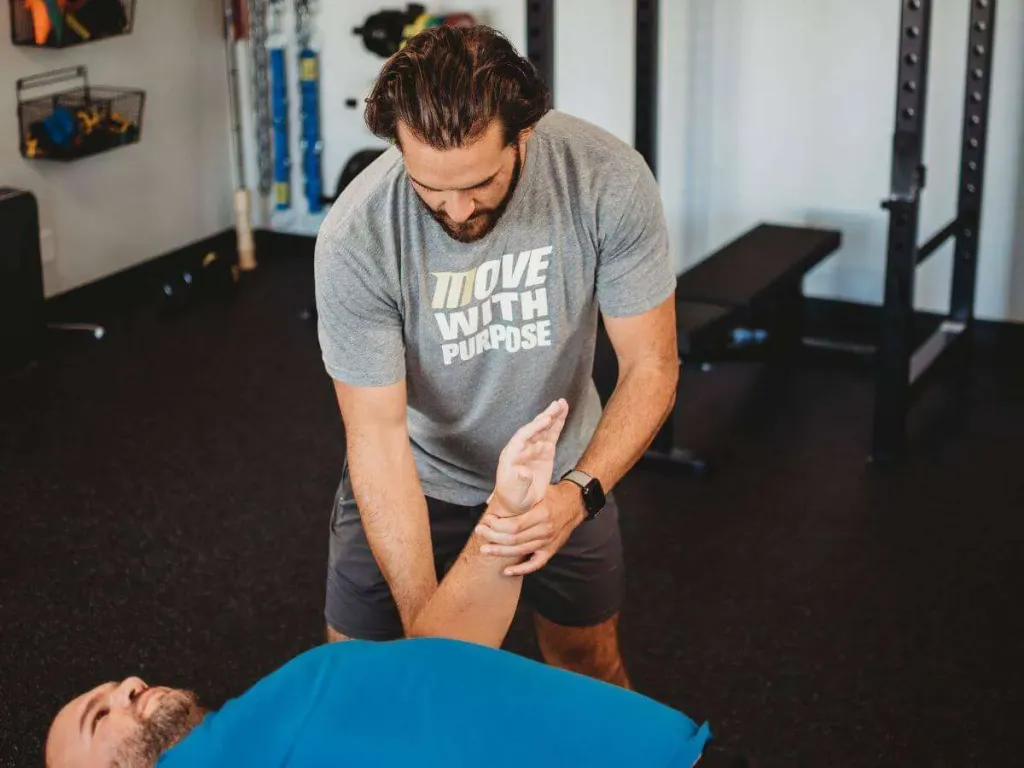3 Stretches For Better Shoulders
August 19, 2023 | Mobility

Shoulder mobility is a crucial aspect of overall health and fitness. As a pivotal joint with a wide range of motion, the shoulder plays a significant role in many daily activities and exercises. However, due to our modern lifestyle, many experience shoulder discomfort and limited mobility. We’ve found 3 stretches that will definitely help loosen the shoulders, making them stronger, more mobile, and healthier.
Understanding Shoulder Anatomy
The shoulder is a complex joint composed of several bones, muscles, and tendons. The primary bones involved are the humerus (upper arm bone), scapula (shoulder blade), and clavicle (collarbone). They work together to enable a wide range of movements. However, we are focusing on the humerus here, or the glenohumeral joint. So, these 3 stretches are not necessarily for the scapula or clavicle, per se.
The Importance of Shoulder Mobility
Shoulder mobility is vital for a variety of reasons. It facilitates daily tasks such as reaching overhead, behind our backs, or out to the sides. Moreover, adequate shoulder mobility is necessary for athletic endeavors, from throwing a baseball to performing a pull-up.
The Role of Stretching in Shoulder Mobility
Stretching plays a critical role in maintaining and improving shoulder mobility. Regularly performing shoulder stretches can:
- Enhance Range of Motion (ROM): Stretching helps increase the ROM in your shoulder joint, allowing for more comfortable and efficient movement.
- Relieve Muscle Tension: Stretching helps alleviate muscle tension, which can contribute to shoulder stiffness and discomfort.
- Improve Posture: Regular shoulder stretches can help correct posture by realigning your shoulders and reducing the strain on your neck and upper back.
- Mitigate Injury: Enhancing flexibility and mobility can help mitigate injuries by improving joint health and muscle balance.
The 3 Stretches To Improve Your Shoulder
Now that we understand the importance of shoulder mobility, let’s dive into the three essential shoulder stretches: the sleeper stretch, the external rotation stretch, and the lat stretch.
The Sleeper Stretch
The sleeper stretch targets the rotator cuff, a group of muscles and tendons that stabilize the shoulder joint.
How to Perform the Sleeper Stretch
- Positioning: Lie on your side, with the shoulder you want to stretch on the bottom. Bend your elbow 90 degrees, making your forearm perpendicular to your body.
- Stretch: Use your opposite hand to push your bent arm down towards the floor gently. You should feel a stretch on the outside of the shoulder.
- Hold: Hold this position for at least 60 seconds.
- Repeat: Repeat as often as needed to improve range of motion
The External Rotation Stretch
The external rotation stretch improves shoulder mobility and flexibility, primarily targeting the teres major, pectoralis major, subscapularis, latissimus dorsi, and anterior deltoid. Simply put, it’s stretching all the stuff on the front side of the shoulder girdle.
How to Perform the External Rotation Stretch
- Positioning: Bring your arm out to the side and at 90 degrees. You can do this up against a wall, or you can do it face-down holding a dowel, as seen below.
- Stretch: Gently rotate your body away from your shoulder to create a stretch. Or, if you’re really tight, you’ll feel the stretch simply by going into more external rotation, as we demonstrate in the video.
- Hold: Hold this position for at least 60 seconds.
- Repeat: Repeat as often as needed to improve range of motion
The Lat Stretch
The lat stretch targets the latissimus dorsi, a large muscle in the back that plays a significant role in shoulder movement.
How to Perform the Lat Stretch
- Positioning: Grab onto a sturdy object, like a squat rack or a dowel (as seen in the video below).
- Stretch: Pull your spine and body gently away from the hand, allowing the shoulder to go further and further overhead. The more overhead the shoulder goes and the further away you pull your spine and body, the more you should feel your underarm stretch.
- Hold: Hold this position for at least 60 seconds.
- Repeat: Repeat as often as needed to improve range of motion
Incorporating Shoulder Stretches into Your Routine
It’s important to incorporate these shoulder stretches into your daily routine. You can include them in your warm-up before exercise, during your cooldown, or even as a break during your workday. Remember, consistency is key when it comes to improving your shoulder mobility.
Precautions and Considerations
While these 3 stretches are generally safe, listening to your body is important. If you feel sharp pain during any of these stretches, stop immediately. Always maintain a smooth, controlled motion—avoid bouncing or jerking. If you have a pre-existing shoulder condition, consult a healthcare provider before starting a new stretching routine.
The Bottom Line
These 3 stretches are powerful tools to improve your shoulder mobility and overall health. Remember, it’s not about how much you stretch but the quality and consistency of your stretches. So, start incorporating these stretches into your routine, and experience the benefits for yourself!
Written by
Brian Murray, FRA, FRSC
Founder of Motive Training
We’ll teach you how to move with purpose so you can lead a healthy, strong, and pain-free life. Our headquarters are in Austin, TX, but you can work with us online by signing up for KINSTRETCH Online or digging deep into one of our Motive Mobility Blueprints.




